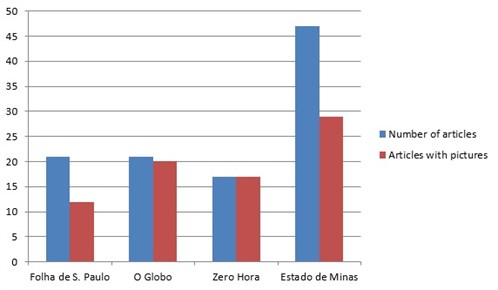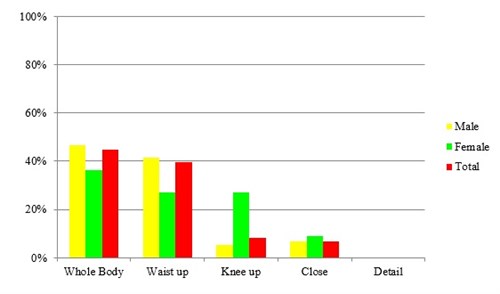Smile for the Camera: Photographic analysis of 2012 Paralympic Games media coverage in Brazilian newspapers
By Tatiane Hilgemberg
Excerpt of article from ICSSPE’s Bulletin no. 70/2016 – see further reference at the bottom of the page:
In the last twenty years, media coverage of sports has been through a spectacularization process, and sport has become increasingly merchandised. And yet, sport for people with disabilities is still not valued, and continues to be marginalized. Athletes with disability differ from nondisabled athletes by failing to fit into discourses regarding physicality (social ideal of physical efficiency), masculinity (aggressiveness, independence, strength and courage), and/or sexuality (defined as the expected and accepted sexual behaviours). For the sake of media-driven entertainment, sportive images need to be pleasant and captivating. So in order to be sold the sports images have to meet those discourses, and also meet the Citius, Altius, Fortius (Faster, Higher, Stronger) Olympic moto.
Sport has long been associated with a masculine ideal athletic body; this concept has become central to the spectacularization process. The ideal athletic body is strong and capable, and without disabilities and damages (Depauw 1997; Hardin et al. 2002). Images and ideals associated with this body and its attributes are strength, ability, resistance and speed. Hargreaves (2000) asserts that people with disabilities are identified, judged and represented first through their bodies, and so are seen as imperfect, incomplete and unsuitable. In sports anyone who does not fit into the description of the ideal athletic body is marginalized or treated as “other”.
According to Léséleuc (2012) athletes with disabilities are portrayed by the media in five key ways: Trivialization; Infantilization; Sexualization; Sportivization; and Marginalization. Trivialization is used to categorize elements or images non-sport-related, such as appearance, their roles outside of sport as mothers, or husbands. Infantilization is used to categorize aspects from athletes’ infancy, or to diminish them using expressions such as “girls” or “boys”. Sexualization or Feminization draws on feminine stereotypes, such as makeup, jewellery and focus on body parts with sexual connotation. Sportivization, Léséleuc argues, is rarely formulated, and is defined by the aspects of individual sportive attitudes. Marginalization, or discrimination, or stigmatization, refers to certain aspects that leads to an unequal treatment.
Method and Material
A content analysis of the representation of Paralympians in four Brazilian broadsheet daily newspapers with a wide circulation – O Globo, Folha de S. Paulo, Estado de Minas and Zero Hora was conducted throughout the duration of the London Paralympic Games (28 August – 10 September 2012), including the day before the opening ceremony and the day after the closing ceremony. A total of 106 news stories and 86 photographs, that had the athletes as focus, were scrutinized. Our aim is to understand how Paralympic athletes are visually portrayed by the press, and if there was any differences between male and female athletes’ representations.
The study proceeded from a categorical instrument adapted from Lee (2013) that analysed the coverage of 12 newspapers with top circulation from 5 countries, during the 2012 Paralympic Games. We used the follow categories:
a) Photographic Angle – coded as “Whole Body”, when the entire athletes’ body is showen; “Waist up”; “Knee up”; “Close”, just the face; “Detail”, when the focus is on some detail in the image or a specific part from the athletes’ body;
b) Visibility of Disability – we coded the photographs to determine whether the disabilities of the athletes were visible or not;
c) Type of Disability – in case the disability is visible we described what type of disability was represented.
To explore how the news media framed athletes with disability is important to introduce framing theory. Robert Entman defines framing as a process of, “(…) selecting and highlighting some facets of events or issues, and making connections among them so as to promote a particular interpretation, evaluation, and/or solution” (2004, p. 05). The media use a limited set of frames to deliver disability stories and shape public opinion about this issue (Ellis & Goggin 2015), in the Paralympians case, for example, that are represented as superhuman or pitiful handicapped (Hardin & Hardin 2003).
Results
We found 106 articles and 86 photographs in the analysed newspapers. Only 28 articles did not have photos which means that 73.6% of articles about the Paralympians had at least one image.
Figure 01 – Comparison between the total number of articles about the Paralympians and articles with pictures in each newspaper

Moreover, we also found difference in the amount of coverage of male and female athletes (Chart 01). The male athletes were portrayed in 87.2% of the photographs, while female were represented at 12.8%. One could argue that woman won fewer medals than man, however this is a very simplistic explanation, since the female athletes were responsible for 25% of all Brazilian medals.
Chart 01 – Gender of the athlete portrayed in the photographs
|
Gender |
Quantity |
Percentage |
|
Male |
75 |
87.2% |
|
Female |
11 |
12.8% |
We also analysed how the athletes’ body were framed and conclude that more than 40% presented the entire body and in more than 60% the disability was visible. The representation of both male and female athletes follows this pattern. These findings contrasts with those of Schantz & Gilbert (2001) who reported that French and German newspapers tend to frame athletes from the waist up and hide their disabilities.
Figure 02 – Photographic Angle

Chart 02 – Visibility of Disability
|
|
Total |
Male |
Female |
|
Visible |
64% |
62.7% |
72.7% |
|
Invisible |
34,9% |
36% |
27.3% |
|
Both |
1.2% |
1.3% |
0% |
We also noted that the most common portrayed disabilities are the physical ones, mostly amputees, wheelchair users and athletes with visual disability (Chart 03).
Chart 03 – Type of Disability
|
Type |
Quantity |
Percentage |
|
Amputee |
36 |
63.2% |
|
Visual Disability |
15 |
26.3% |
|
Wheelchair |
6 |
10.5% |
Continue reading
If you want to continue reading, Play the Game readers get exclusive free access by first logging into ICCSPE’s Membership area at https://www.icsspe.org/user/login .
Please enter username: CUHK and password: 9unwtVMh.
This log-in will be valid until October 31, 2016. The latest Bulletin is offered in the drop-down menu under “Membership”.





